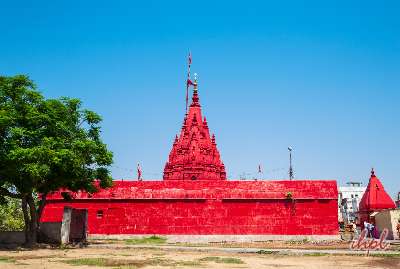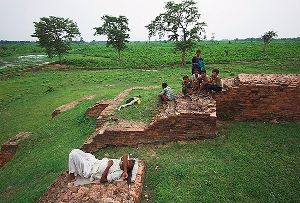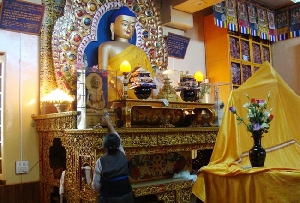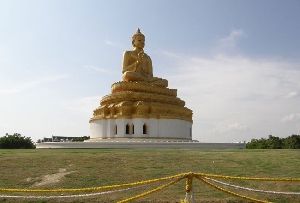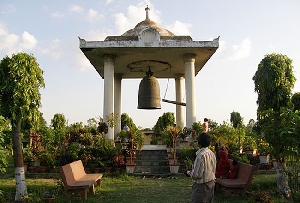According to the epic Ramayana, Shravasti was a new city created for Lava (the son of King Rama). Rama divided his Kosala Kingdom into two parts and gave Shravasti to his son Lava and Kushavati to another son Kusha, another town in Kosala. According to the Mahabharata, the origin of Shravasti is related to the legendary king Shravasta. According to Buddhist tradition on the other hand, the city was called Savatthi because the sage Savattha lived there. Another tradition says the name of Shravasti comes from the phrase “Sabbam atthi” (meaning “all things”, or everything). The Angulimala’s Stupa Shravasti is one of the major monuments in Shravasti.
Whether or not the town of Shravasti had everything, it most definitely had the blessings and the physical presence of the Lord Buddha, the pioneer of Buddhism. Lord Buddha spent as many as 24 monsoons at Shravasti at the Jetvana Monastery.
History
Legend has it that Angulimala was a fiercely dreaded ruthless dacoit in Shravasti. His name came from the words anguli (finger) and mala (necklace) because he is said to chop away the fingers of his victims and wear them in a necklace around his neck. This Angulimala, in a fit of rage, was about to kill his mother one day, when Lord Buddha was passing by. Lord Buddha later showered him with his wisdom and turned him into a disciple. Then onwards, Angulimala served the cause of public good, pursued knowledge and established himself as one of the important disciples of Lord Buddha. Angulimala’s Stupa Shravasti In India was built by Angulimala for his Lord- Buddha.
Description
The Angulimala’s Stupa Shravasti In Uttar Pradesh In India was excavated along with other ruins of th Shravasti City in 1863. Angulimala’s Stupa Shravasti Uttar Pradesh In India however, lies in utter ruins. A plinth leading to a raised platform accessible by a flight of stairs can be seen. On the platform one can see the remains of the rest of the structure. Walls, and more stairs suggesting the height that the stupa was originally built up to, can be seen. The Angulimala’s Stupa Shravasti lies testimony to the immense influence of Lord Buddha that permeated the Indian society specially in Northern India, in the pre Christian era. With Buddhism came many of the modern ideas that later evolved and proved indispensable in the development of civilization.
Angulimala’s Stupa Shravasti is named after a dacoit, who essentially must have belonged to the dredges of the society. The legend of Angulimala is also reflective of the abolition of caste system that Lord Buddha propagated. And Lord Buddha was the first to do that. In general Buddhism moved away from the vices of Hinduism, keeping the virtues untouched and therefore has had much positive and practical influence on the society; a tangible influence moved out of the scriptures to be turned into reality.
Checkout: Agra Tour Packages, Lucknow Tour Packages, Mathura Tour Packages, Uttar Pradesh Tour Packages, Shravasti Tour Packages





